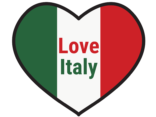In order to ask about dietary restrictions in Italian, it’s important to learn specific phrases and vocabulary related to food, health, and dining. This includes understanding how to express your own dietary needs, asking about ingredients in a dish, and being able to comprehend the responses. This guide will provide you with the necessary language tools to communicate your dietary restrictions effectively in Italian.
Navigating Dietary Restrictions: How to Ask in Italian

Navigating dietary restrictions while traveling can be a daunting task, especially when you’re in a country where you don’t speak the language fluently. This is particularly true for Italy, a country renowned for its rich and diverse culinary traditions. However, with a little preparation and knowledge of key phrases, you can confidently communicate your dietary needs in Italian and enjoy your gastronomic journey without worry.
Firstly, it’s important to understand that dietary restrictions are not as commonly recognized in Italy as they might be in other countries. While vegetarianism is becoming more widespread, veganism and gluten-free diets are less common. However, Italians are generally very accommodating once they understand your needs.
To communicate your dietary restrictions, you’ll need to learn a few key phrases. If you’re vegetarian, you can say “Sono vegetariano/a” (I am a vegetarian). For vegans, the phrase is “Sono vegano/a” (I am a vegan). If you’re gluten intolerant, you can say “Sono celiaco/a” (I am celiac).
In addition to these basic phrases, it’s also helpful to know how to say “I cannot eat…” which is “Non posso mangiare…” followed by the food you cannot consume. For example, “Non posso mangiare carne” means “I cannot eat meat”.
However, simply stating your dietary restriction may not be enough, as some might not fully understand the extent of your diet. For instance, if you’re vegan, you might also need to specify that you don’t eat dairy products or eggs. In this case, you can say “Non mangio prodotti lattiero-caseari o uova” (I don’t eat dairy products or eggs).
If you have a severe allergy, it’s crucial to communicate the seriousness of your condition. The phrase “Ho una grave allergia a…” (I have a severe allergy to…) followed by the food you’re allergic to, can be a lifesaver. For example, “Ho una grave allergia alle noci” means “I have a severe allergy to nuts”.
It’s also worth noting that cross-contamination is a concept that might not be widely understood in all Italian eateries. If you have a severe allergy or intolerance, it’s important to stress this point. You can say “Devo evitare ogni contatto con…” (I must avoid any contact with…) followed by the food you cannot consume.
While these phrases are a good starting point, it’s also beneficial to carry a dietary restriction card in Italian. These cards, which can be easily found online, provide a clear and concise explanation of your dietary needs and can be shown at restaurants or food stalls.
In conclusion, while navigating dietary restrictions in Italy can be challenging, it’s certainly not impossible. By learning key phrases and being clear about your needs, you can ensure a safe and enjoyable culinary experience. Remember, Italians take great pride in their food, and most will go out of their way to accommodate your dietary needs once they understand them. So, don’t let dietary restrictions stop you from enjoying the rich and diverse culinary delights that Italy has to offer.
Conclusion
In conclusion, to ask for dietary restrictions in Italian, you would say “Hai delle restrizioni alimentari?” for “Do you have any dietary restrictions?” If you want to specify your own dietary restrictions, you would say “Ho delle restrizioni alimentari” which means “I have dietary restrictions.”
Secure Your Dream Italian Experience Before It’s Gone!
Planning a trip to Italy? Don’t let sold-out tours or overcrowded attractions spoil your adventure. Unmissable experiences like exploring the Colosseum, gliding through Venice on a gondola, or marvelling at the Sistine Chapel often book up fast—especially during peak travel seasons.

Booking in advance guarantees your place and ensures you can fully immerse yourself in the rich culture and breathtaking scenery without stress or disappointment. You’ll also free up time to explore Italy's hidden gems and savour those authentic moments that make your trip truly special.
Make the most of your journey—start planning today and secure those must-do experiences before they’re gone!
